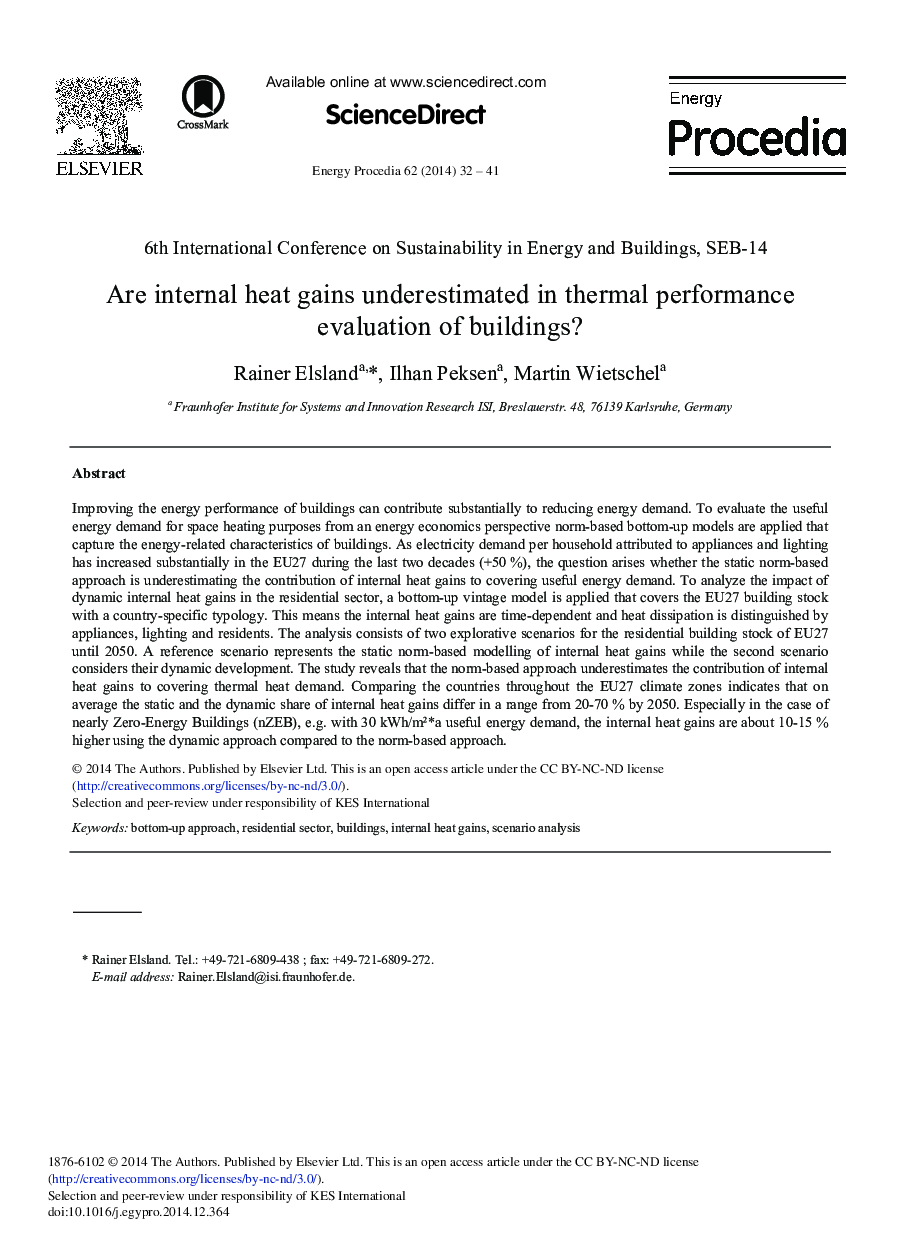| کد مقاله | کد نشریه | سال انتشار | مقاله انگلیسی | نسخه تمام متن |
|---|---|---|---|---|
| 1510089 | 1511173 | 2014 | 10 صفحه PDF | دانلود رایگان |

Improving the energy performance of buildings can contribute substantially to reducing energy demand. To evaluate the useful energy demand for space heating purposes from an energy economics perspective norm-based bottom-up models are applied that capture the energy-related characteristics of buildings. As electricity demand per household attributed to appliances and lighting has increased substantially in the EU27 during the last two decades (+50%), the question arises whether the static norm-based approach is underestimating the contribution of internal heat gains to covering useful energy demand. To analyze the impact of dynamic internal heat gains in the residential sector, a bottom-up vintage model is applied that covers the EU27 building stock with a country-specific typology. This means the internal heat gains are time-dependent and heat dissipation is distinguished by appliances, lighting and residents. The analysis consists of two explorative scenarios for the residential building stock of EU27 until 2050. A reference scenario represents the static norm-based modelling of internal heat gains while the second scenario considers their dynamic development. The study reveals that the norm-based approach underestimates the contribution of internal heat gains to covering thermal heat demand. Comparing the countries throughout the EU27 climate zones indicates that on average the static and the dynamic share of internal heat gains differ in a range from 20-70% by 2050. Especially in the case of nearly Zero-Energy Buildings (nZEB), e.g. with 30 kWh/m2*a useful energy demand, the internal heat gains are about 10-15% higher using the dynamic approach compared to the norm-based approach.
Journal: Energy Procedia - Volume 62, 2014, Pages 32-41